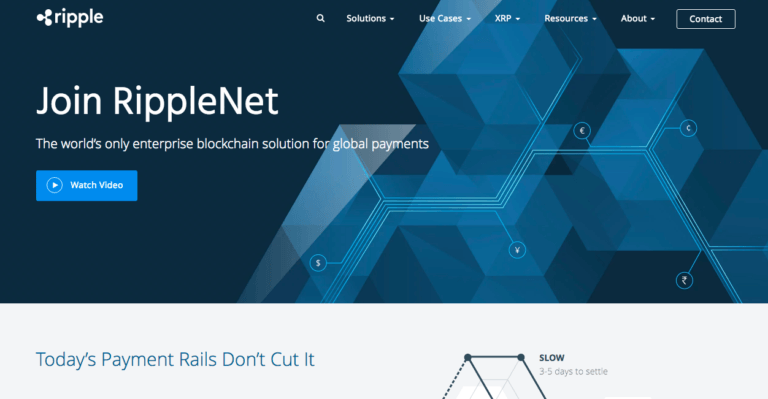On Tuesday (January 8th), Californian FinTech startup Ripple announced that it had acquired another 13 customers for RippleNet, its global payment network, bringing the total to over 200.
These 13 new financial institutions include:
- “Euro Exim Bank —deals with a “range of trade finance instruments such as Instant Letters of Credit, Corporate Bank Accounts (Prestige Plus), Letters of Credit, Stand-By Letters of Credit, International Wire Transfers, Bank Guarantees, Pre-paid Master Cards and Trade Credit Lines”);
- SendFriend (an online service that specializes in sending money from U.S. to the Philippines);
- JNFX (a London-based FOREX services firm);
- Financial Transaction Control Systems (a Stockholm-based company that builds “financial infrastructure to change the way value moves”);
- Al Ahli Bank of Kuwait (a retail and commercial bank located in Kuwait City);
- Transpaygo (a remittance service that “gives SMEs the power to make payments within one business day”);
- Bahrain Financing Company (provides money transfer and currency exchange services);
- ConnectPay (a Lithuania-based “provider of financial services for rapidly-growing, online-focused businesses which are long under-served by mainstream banks”);
- GMT Money (an Australian money transfer services specializing in payments from Australia to India);
- WorldCom Finance (“a customer-oriented company specializing in developing Internet platforms for instant money transfer and immediate bank deposits worldwide”);
- Olympia Trust Company (a trust company that “also provides foreign currency exchange services”);
- Pontual (a Californian company that calls itself the “number one payment processor to Brazil”); and
- Banco Rendimento (a Brazilian bank).
Ripple says that “JNFX, SendFriend, Transpaygo, FTCS and Euro Exim Bank will leverage the digital asset XRP to source liquidity on-demand when sending payments on behalf of their customers;” and that using XRP “for liquidity when sending a cross-border payment helps financial institutions avoid the hassle of pre-funding accounts in destination currencies” as well as allowing them “to make faster, lower cost payments than they can through the traditional correspondent banking system.”
Furthermore, Ripple’s blog post says: “For the financial institutions on RippleNet not currently using XRP for liquidity but interested in immediate settlement—such as CIMB or Olympia Trust Company—they are able to leverage Ripple’s technology and modern APIs for faster, lower cost and more transparent payments.”
Comments From Ripple’s Newest Customers
Kaushik Punjani, Director of Euro Exim Bank:
“As a leader in trade finance solutions for global corporates and fintechs, we are uniquely placed to offer new payment channels and ways to source liquidity. Our customers—whether big corporates or individual remitters—have historically been restricted from obtaining suitable funds or settling transactions in a cost efficient and timely manner. Working collaboratively with Ripple and selected counterparts, we have designed, tested and are implementing both xCurrent and xRapid in record time, and we look forward to the benefits these will bring our customers.”
David Lighton, the Founder of SendFriend:
“The existing correspondent banking system is slow, inefficient and costly. SendFriend was founded at MIT with the belief that there must be a better way to send payments. We are excited to partner with Ripple to do just that. Through our partnership, we are bringing our customers a next-generation, blockchain payment solution that leverages XRP to address many of the efficiency and equity problems with existing remittances. For them, that means cheaper and faster payments.”
Ashay Mervyn, the Head of Emerging Markets at JNFX:
“Payments between countries are beset with inefficiencies—inefficiencies around cost, inefficiencies around speed and inefficiencies around transparency. RippleNet is specifically geared to address these problems. For our customers who range from the largest conglomerates in Africa (with operations and commitments in over 40 countries) to individuals in villages in rural Nigeria, our decision to join RippleNet and utilize their payment solution—including XRP for on-demand liquidity—just makes sense.”
Comments From Ripple’s Management
Brad Garlinghouse, the CEO of Ripple, had this to say:
“In 2018, nearly 100 financial institutions joined RippleNet, and we’re now signing two—sometimes three—new customers per week. We also saw a 350 percent increase last year in customers sending live payments, and we’re beginning to see more customers flip the switch and leverage XRP for on-demand liquidity. At the end of the day, our goal is to make sure our customers can provide excellent, efficient cross-border payments experiences for their customers, wherever they are in the world.”
Featured Image Courtesy of Ripple









